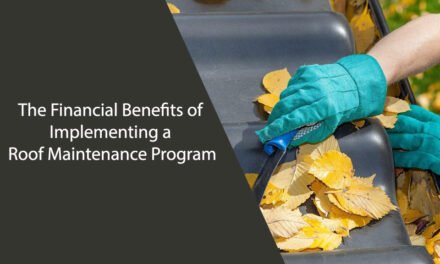
Taking care of the shelter above your head is crucial for a safe and comfortable home environment. When it comes to maintaining your roof, there are several simple yet essential tasks that can prevent major issues down the line.
From regular inspections to addressing minor repairs promptly, each step plays a vital role in the longevity of your roof. But what are the specific actions you should prioritize to ensure your roof remains in top condition?
Table of Contents
Importance of Roof Maintenance
To ensure the longevity and functionality of your home, roof maintenance is crucial. Your roof serves as the first line of defense against the elements, protecting your home from rain, snow, wind, and sunlight. Regular maintenance helps prevent costly repairs and extends the lifespan of your roof. By addressing minor issues promptly, you can avoid major problems down the road.
One key aspect of roof maintenance is keeping your gutters clean. Clogged gutters can lead to water pooling on your roof, causing damage over time. Trimming overhanging branches is also important to prevent debris from accumulating on your roof and to minimize the risk of damage during storms. Additionally, inspecting your roof for missing or damaged shingles, as well as checking for signs of wear and tear, can help you identify issues early on.
Repairing Roof Leaks and Damage
To effectively address roof leaks and damage, promptly inspect your roof for any signs of water infiltration or structural issues. Begin by checking for missing, cracked, or damaged shingles. Look for water stains on the ceiling or walls inside your home, as they may indicate a leak. Additionally, examine the roof flashing, seals around vents, chimneys, and skylights for any gaps or deterioration. If you identify any issues, consider hiring a professional roofer to assess and repair the damage.
When repairing roof leaks, start by locating the source of the leak. This may require tracing the water entry point from inside your home back to the roof. Depending on the severity of the damage, you may need to replace shingles, repair flashing, or seal gaps with roofing cement.
Regular Inspections for Damage
Regularly inspecting your roof for damage is essential to identify and address issues before they escalate into costly problems. Begin your inspection by visually examining the roof from the ground, looking for missing, cracked, or curling shingles, as well as any signs of sagging or water damage. Use binoculars to inspect areas that are difficult to see clearly. Additionally, check for any debris buildup or moss growth, which can indicate potential issues.
Next, safely climb onto the roof to conduct a closer inspection. Walk carefully and wear appropriate footwear to prevent slips. Check for any loose or damaged shingles, as well as cracked flashing around chimneys, vents, and skylights. Inspect the gutters for shingle granules, a sign of roof deterioration. Look for soft spots, mold, or mildew, which could indicate water damage.
Document any issues you find and promptly address them to prevent further damage and ensure the longevity of your roof. Regular inspections can help you catch problems early and save you money in the long run.
Cleaning Gutters and Downspouts
Cleaning gutters and downspouts is a crucial maintenance task that helps prevent water damage and prolong the lifespan of your roof. Over time, leaves, dirt, and debris can accumulate in your gutters, obstructing the flow of water. This blockage can lead to water overflow, which may seep into your roof, causing leaks and structural damage.
To clean your gutters effectively, start by using a ladder to access them safely. Scoop out the debris by hand or with a trowel, placing it in a bucket for disposal. Once the gutters are clear, flush them with water using a hose to ensure proper drainage.
Downspouts are equally important and should be checked for blockages. Use a plumber’s snake or a pressure washer to clear any clogs hindering the flow of water. Additionally, inspect the downspouts for any signs of damage or misalignment. Properly functioning downspouts direct water away from your home’s foundation, preventing water buildup that can compromise the structural integrity of your property.
Trimming Overhanging Branches
When maintaining your home roof, it’s essential to address the issue of trimming overhanging branches to prevent potential damage and prolong the lifespan of your roof. Overhanging branches can pose a significant threat to your roof, especially during storms or high winds. These branches can scrape against the roof surface, leading to shingle damage or even punctures. To prevent such issues, regularly inspect your property for any branches extending over your roof and trim them back to a safe distance. It’s recommended to keep branches at least 6 feet away from your roof to minimize the risk of damage.
Trimming overhanging branches is a task that should be done with caution. If the branches are large or difficult to reach, consider hiring a professional tree trimming service. By taking proactive measures to trim overhanging branches, you can protect your roof from potential harm and ensure it stays in good condition for years to come.
Remember to prioritize safety by using proper equipment and taking precautions when working at heights. Regular maintenance and prompt repairs can help extend the lifespan of your roof and prevent further damage to your home.





